There’s an interesting article in today’s Daily Telegraph by Jack Watkins where he explores the enduring appeal of the Shell travel guides, which published in the first half of the past century.
The Shell Guides were aimed at a new breed of car-driving metropolitan tourists. They were for those who sought guides that were neither too serious nor too shallow and who took pleasure in the ordinary and peculiar culture of small town Britain. In the three decades after the Second World War the Shell Guides provided a “surreptitiously subversive synthesis of the British countryside,” says Dr David Heathcote, curator of an exhibition on the books at the Museum of Domestic Design & Architecture (MODA) in Hertfordshire.
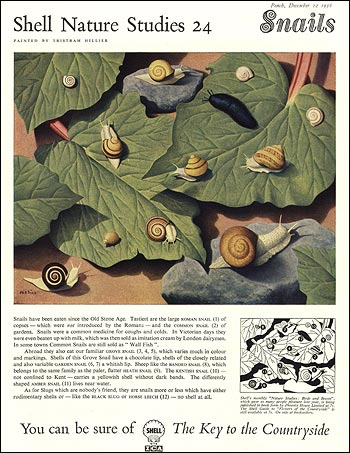
As Watkins notes, “it was the Shell Guides, with their sharp writing and atmospheric black and white photos and pictures, that elevated the medium to an art form.” The first one, on Cornwall and penned by Sir John Betjeman, was published in 1934. It was quickly followed by volumes for Devon, Dorset and Derbyshire, and the series grew, undergoing various revisions, into the 1980s.

 “These slender tomes, long edited by Betjeman, were at their best when focusing on small towns and villages”, says Heathcote.

 “Metropolitan cities were mostly ignored and instead they plunged enthusiastically into the local, the particular and – above all – the peculiar. Today we’ve got the likes of the Rough Guides, which are only interested in places they regard as ‘cool’ and thus dismiss swathes of Britain as not worth visiting.”
I’m particularly interested in this assertion by Watkins: “The assumption that tourism is merely a glorified consumer experience is bad enough when applied to our oldest towns. It turns them into ‘anywherevilles’, with shopping and eating as the main end purpose. But, in a subtler way, it has even happened to rural parts of Britain. The plethora of national parks and conservation areas does protect fragile aspects of the natural or built heritage, but by default has led to superficial branding by marketing bodies. It has dangerously eroded an appreciation of the locally endearing, or what Betjeman might have called the ‘superficially mundane’.”
For similar discussions on the blog regarding branding and the heritage industry see my previous posts here and here.
The Shell Guides: Surrealism, Modernism, Tourism is at MODA until November 2 (020 8411 5244). The exhibition explores the creative forces that created the Shell County Guides. It considers their widespread cultural influence on our shared understanding of Britain and British-ness.
Posted in REPRESENTATION, RESEARCH | Comments Off on SUPERFICIALLY MUNDANE VS ANYWHEREVILLES
There’s an article in today’s Guardian G2 section where four writers have been sent back to the corner of Britain that once gave them so much enjoyment.

Hannah Pool, north Cornwall
Memories-on-Sea features Blake Morrison re-visiting the North Wales coast, Hannah Pool in Cornwall, Stuart Jeffries on the Isle of Wight and Maya Jaggi visiting the Lake District.
Posted in RESEARCH | Comments Off on MEMORIES ON SEA
I’ve just been looking at Nick Rowling’s book The Art Handbook (which seems to be out of print) in which there’s an interesting chapter on the theme of leisure in art.
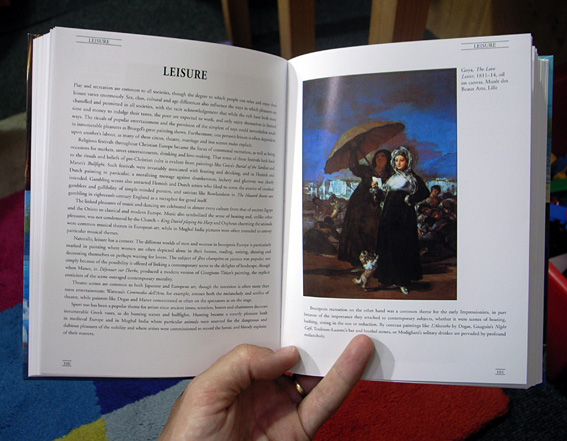
Here’s his introduction-
“Play and recreation are common to all societies, though the degree to which people can relax and enjoy their leisure various enormously. Sex, class, cultural and age differences also influence the ways in which pleasures can be channeled and permitted in all societies, with the tacit acknowledgement that while the rich have both more time and money to indulge their tastes, the poor are expected to work, and only enjoy themselves in limited ways. The rituals of popular entertainment and the provision of the simplest of toys could nevertheless result in innumerable pleasures as Bruegel’s great painting shows. Furthermore, one person’s leisure is often dependent upon another’s labour, as many of these circus, theatre, marriage and inn scenes make explicit.
Religious festivals throughout Christian Europe became the focus of communal recreation, as well as being occasions for markets, street entertainments, drinking and love-making. That some of those festivals hark back to the rituals and beliefs of pre-Christian cults is evident from paintings like Goya’s Burial of the Sardine and Manet’s Bullfight. Such festivals were invariably associates with feasting and drinking, and in Flemish and Dutch painting in particular, a moralizing message against drunkenness, lechery and gluttony were clearly intended. Gambling scenes also attracted Flemish and Dutch artists who liked to stress the avarice of crooked gamblers and gullibility of simple-minded punters, and satirists like Rowlandson in the Hazard Room saw gambling in eighteenth-century England as a metaphor of greed itself.
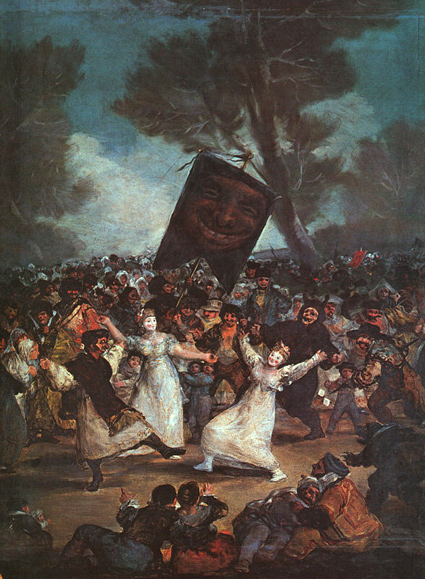
The Burial of the Sardine, Francisco de Goya, 1812-1819, Real Academia De Bellas Artes, Madrid
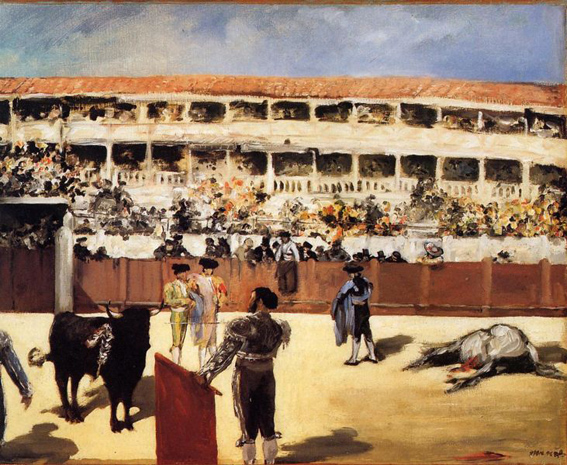
The Bullfight, Edouard Manet c.1865-67, The Art Institute of Chicago
Naturally, leisure has a context. The different worlds of men and women in bourgeois Europe is particularly marked in painting where women are often depicted alone in their homes, reading, writing, dressing and decorating themselves or perhaps waiting for lovers. The subject of fetes champétre or picnics was popular, not simply because of the possibility it offered of linking a contemporary scene of the delights of landscape, though when Manet, in Déjenuer sur l’herbe, produced a modern version of Giorgione-Titian’s painting, the explicit eroticim of the scene outraged contemporary morality.
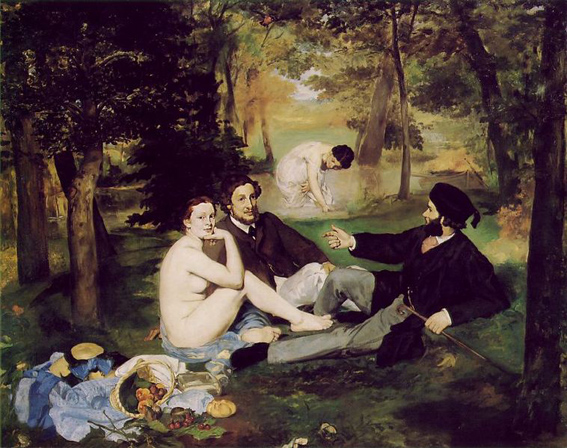
Le déjeuner sur l’herbe, Edouard Manet 1863, Musée d’Orsay
Sport too has been popular theme for artists since ancient times: wrestlers, boxers and charioteers decorate innumerable Greek vases, as do hunting scenes and bullfights. Hunting became a courtly pleasure both in medieval Europe and in Mughal India where particular animals were reserved for the dangerous and gubious pleasures of the nobility and where artists were commissioned to record the heroic and bloody exploit of their masters.”
I was interested in his reference to one man’s leisure being another man’s work. This was particularly true of the grouse shooting which I attended last week, where there were as many staff working (game keepers, dog handlers, drivers etc) as there were members of the shooting party.
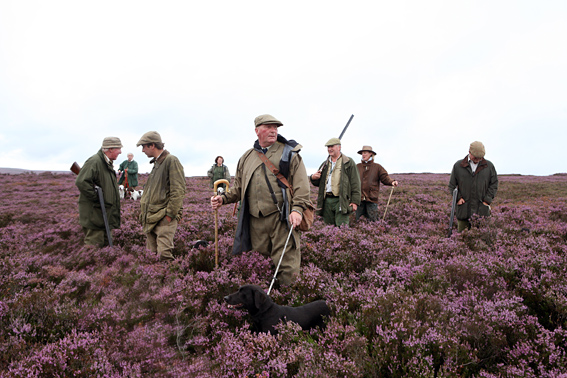
The head gamekeeper on the shoot (seen in the centre of the photograph) was George Thompson, 52, of Pickering. Mr Thompson has spent the last 17 years nurturing the heather moorland of the 7,000 acre Spaunton Estate (owned by George Wynn-Darley) on the North Yorkshire Moors. After years of working as a scaffolder, he became a gamekeeper in 1991, and was promoted to head moorland keeper at Spaunton in 1999. This year he has been named Gamekeeper of the Year, organised by Farmers Weekly and the Country Landowners Association Game Fair.
Posted in EVENTS & PASTIMES, RESEARCH | Comments Off on ONE MAN’S LEISURE, ANOTHER MAN’S WORK
On Friday I stopped in at the National Media Musuem to see the current exhibition, Sunny Snaps: Beach and Street Photography in Britain. The exhibition celebrates the work of the once familiar, but now largely forgotten, commercial portrait photographers who were once commonplace wherever people gathered for leisure or pleasure- notably at the seaside.
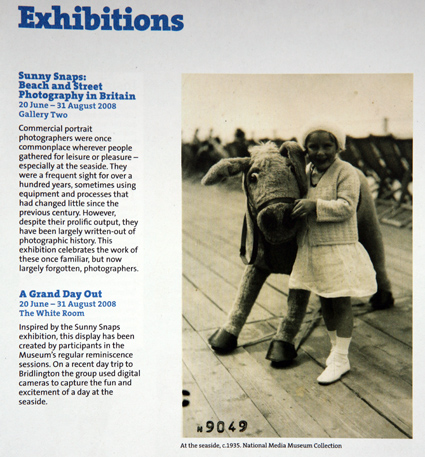
As the accompanying essay to the exhibition states, these photographers were a frequent sight for over a hundred years, sometimes using equipment and processes that had changed little since the previous century. However, despite their prolific output, they have been largely written-out of photographic history.
It’s an enlightening and often humorous exhibition which tracks the history of the genre from the independent operators using special ‘while-you-wait’ cameras on tripods to the photographers using hand-held ‘reflex’ cameras and the beach photographers who adopted various gimmicks such as the ‘head-through-the-hole’ novelty photograph which first appeared in the 1890s.
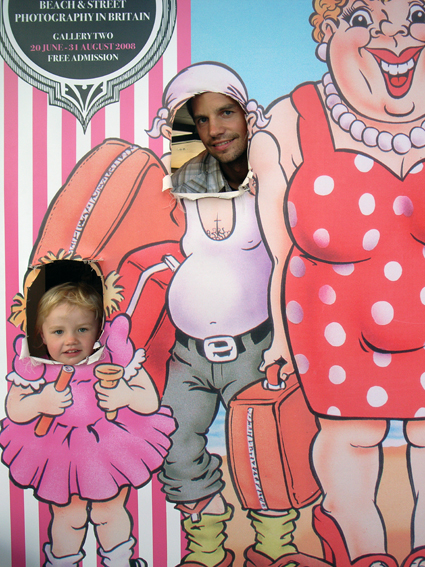
Jemima and I in a ‘head-through-the-hole’
Also worth a look is the exhibition Live by the Lens. Die by the Lens, which explores the complicated relationship between stars, publicists, photographers and the media. Of particular interest are examples of some of the earliest paparazzi pictures (Greta Garbo on holiday in Italy, Elisabeth Taylor and images by the photographers who pursued Charlie Chaplin as early as the 1930s).

‘Sunny Snaps’ is showing in Gallery Two until 31st August 2008.
There’s also an opportunity to post up some of your own photos from seaside holidays, you have enjoyed with friends or family. These can be uploaded onto the museum’s Flickr group.

‘Live by the Lens. Die by the Lens’ is showing in Gallery One until 28th September.
Â
Posted in RESEARCH | Comments Off on SUNNY SNAPS @ NATIONAL MEDIA MUSEUM
I came across Chris Wood when hearing him interviewed on Radio 4 about his most recent album Trespasser. Wood has been established on the English folk scene for many years and he is known for his songs of English life and his uncompromising lyrical approach. I’ve been listening to the album now for a few weeks and it is contemporary and thought-provoking. As the title implies, the theme of the album is enclosure, ownership and exclusion.Â
My favourite song is undoubtedly ‘The Cottager’s Reply’ where an elderly Cotswold cottage owner talks to the rich young couple who want to pay him half a million pounds for his home.  It’s a quiet, beautiful but at the same time, angry song.Â
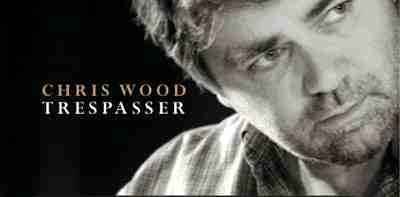
Â
Wood’s music reveals his love for the un-official history of the English speaking people. As quoted on his website–
“The people of England have been unravelling the universe through their songs, stories, poetry, jokes and dances for millennia and it is this vibrant body of work which becomes the freely given treasure trove for the next generation. The simple lesson we have learnt from our ancestors is to tell nothing more or less than our own story and that the gold we are all searching for is in our own backyard.â€â€¨
There is an interesting essay in the sleeve notes to Trespasser about what he sees as the ongoing effects of the enclosure of common land in England to the present day.
You can read a review of the album here.
28th July Update-Â Check out this article written by Chris in today’s The Times, where this quote was taken:
“What I do believe is that, like it or not, the folk song of England is a living repository of our unofficial history and is possibly the single richest cultural resource we have. It is nothing less than the collective “common sense†of our ancestors and it grants us a perspective on how we have become the people we are in a way that no other “document†can.
If that is too much of an imaginative leap, try looking across the ocean. English folk song is at the heart of the music of white America, from where it evolved to tell a large part of that nation’s story. For all that time back home in England it has been ceaselessly churning, growing and evolving.
In a media-dominated culture, where style is placed over substance, it is understandable that people just don’t get it, but as the indigenous population of this country is increasingly called upon to lay its cultural cards on the table most of us agree that “Land of Hope and Glory†and “She loves you, yeah, yeah, yeah,†don’t quite tell the whole story.”
Posted in INSPIRATION, RESEARCH | Comments Off on CHRIS WOOD- TRESPASSER
I mentioned research published by Professor Danny Dorling in an earlier post last week. One of his colleagues, Professor Nicky Gregson, who also happened to be my university tutor, has conducted extensive studies into the social phenomenon of the car boot sale. Having just been to the Chelford car boot I thought it might be of interest to post up some of her research findings – especially as over a million people enjoy haggling and finding curious, useful and sometimes (in)valuable items at car boot sales every weekend.
Professor Gregson was one of the first people to do academic research into these events, exploring the car boot as marginal spaces of contemporary consumption. Her various studies were conducted alongside Louise Crewe of Nottingham University and you can see abstracts from their research papers here, here and here.
Their research found that the most popular buys were children’s clothes. Items bought to “sell on” included clothes and equipment for babies, videos, kitchen utensils and DIY tools. The maximum number of purchases by a consumer recorded was 94 and the most spent was £100. Far from being the poor and unemployed, 40 per cent of buyers were employed; 16 per cent in part-time work and 21 per cent retired. Two-thirds of the comsumers surveyed were aged 25-55 and men and women were found to be fairly evenly represented at the sales. Women typically bought and sold children’s clothes, toys, ornaments and household goods with men showing greater interest in things such as DIY equipment, gardening tools and car accessories and parts.
You can find out more about Gregson’s recent research into ‘Disposal, Devaluation and Consumerism’ here.
And if you’re looking for a car boot near you, visit www.carbootjunction.com.
Â
Posted in EVENTS & PASTIMES, RESEARCH | 1 Comment »
After writing my The Turner Effect blog entry I was reminded of John Taylor’s book A Dream of England. In the book Taylor talks about how the tourist industry uses heritage and draws on poets and novelists to advertise places – Shakespeare Country around Stratford-Upon-Avon (also branded England’s England), Bronte Country in Yorkshire, Hardy Country in Wiltshire and Dorset, Catherine Cookson Country in Tynesdie and Beatrix Potter tourism in the Lake District.
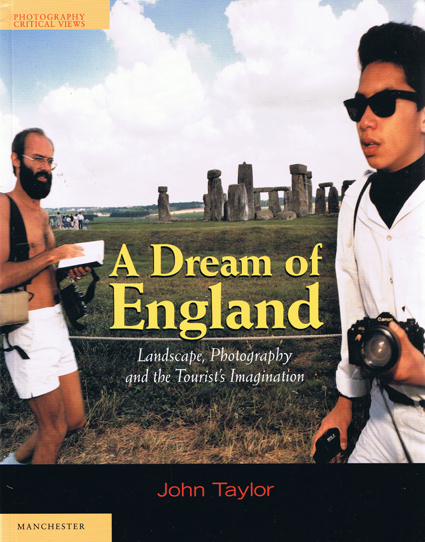
In a chapter titled ‘Pleasures of the Imagination’ Taylor looks at the work of photographers who have adopted a “quizzical stance in relation to the kinds of photographs which tourists produce or which are produced for them in guidebooks.†Photographers who “express doubts about the imagine community of England fashioned in the image of the dominant white middle class.†Taylor terms these individuals, ‘oppositional photographers’, and he includes bodies of work by Martin Parr (Cost of Living), John Kippin (ENGLISHISTORY), Karen Knorr (Monks of Disfunction), Ingrid Pollard (Pastoral Interludes) and Paul Reas (Flogging a Dead Horse).
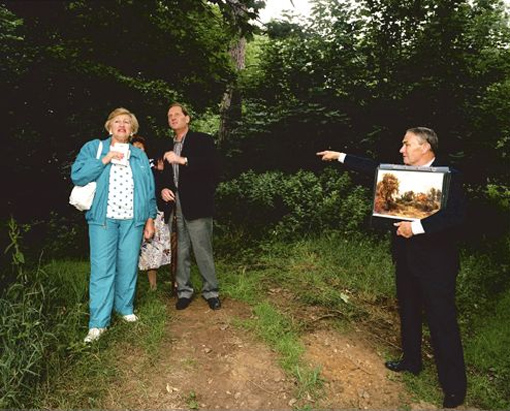
© Paul Reas
In Flogging A Dead Horse, Paul Reas photographs the tour guide who carries a reproduction of Constable’s original Flatford Mill painting and is seen indicating the area which Constable actually painted, thereby overcoming the tourists fear of failing to see the desired spot. Reas’ work is a biting criticism of the heritage industry, an industry which Taylor suggests “represents a break with a politicsed and complex historical appreciation of contemporary English life.†Heavyweights such as English Heritage and National Trust use entertainment to display history, but a sanitized version which is just a representation of the past, clinical and doesn’t present contradictions or context.
You can see more of Reas’ work from Flogging a Dead Horse (Pub: Cornerhouse/Arts Council, UK 1993) here.
Posted in OTHER STUDIES, RESEARCH | Comments Off on HERITAGE INDUSTRY
One of the interesting dilemmas before starting a journey, especially one of this length, is what reading material to pack. Space is at a premium in a motorhome so you have to choose carefully.
I’ve finally finished reading H.V.Morton’s In Search of England and debating what to start next. Although, to be honest, I’m not getting much downtime to read, hence the length of time it took me to get through Morton! It’s amazing what little opportunity I have after a daily routine of photographing, traveling, finding places to camp for the night, servicing the motorhome (filling with water, emptying sewage, putting up/taking down beds etc), checking posts on the website, researching future destinations and events, updating the blog, loading and unloading film (in a portable dark bag), eating, helping to entertain Jemima and finally Sarah and I trying to get some personal time together!
So here’s a list of what I have to choose from on our cupboard shelf-

A Dream of England, John Taylor
A Farewell to Arms, Ernest Hemingway (Sarah’s recommendation)
Brideshead Revisited, Evelyn Waugh (Sarah’s recommendation)
Catch 22, Jospeh Heller
Ed Ruscha and Photography, Sylvia Wolf
Landscape and Power, Edited by W.J.T.Mitchell
Larry’s Party, Carol Shields (Sarah’s)
Lonely Planet Guide to Britain
Notes From A Small Island, Bill Bryson
On Photography, Susan Sontag
Persuasion, Jane Austen (Sarah’s)
Sugar and Other Stories, A.S.Byatt (Sarah’s)
The Art Book, Phaidon
The English Year, Steve Roud
The Fifth Child, Doris Lessing (Sarah’s)
The Granta Book of Reportage
The Paris Review Interviews, Volume 2 (Sarah’s)
The Photo Book, Phaidon
The Story of England, Christopher Hibbert
The World of Robert Fisk
If you have any recommendations on good books for a journey around England, please post them below.
Â
Posted in INSPIRATION, ON THE JOB, RESEARCH | 3 Comments »
I recently saw Billy Bragg perform (with The Imagined Village). He was wearing a Marmite t-shirt. The reason, he told the audience, you either love him/ his music or hate him/his music. I’ve never really explored his music so couldn’t comment. Saying that, I’m currently listening to his 2002 album England, Half English and quite enjoying it. I can’t say that I love his music, but I’m definitely coming to appreciate it. I particularly like the title track, the words of which you can read here.
Â
Posted in RESEARCH | Comments Off on BILLY BRAGG & MARMITE
I’m off to the Epsom Derby tomorrow, so this seems like a good opportunity to post up the wonderfully satirical painting The Derby Day by William Powell Frith.
Â
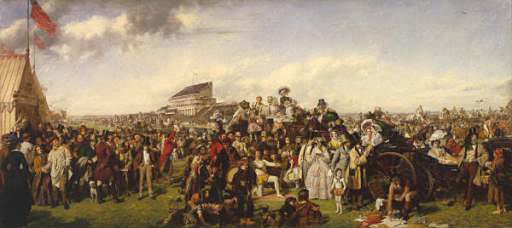
William Powell Frith, The Derby Day (1856-8). Oil on canvas.
Â
The painting presents a panorama of modern Victorian life and when it was first exhibited at the Royal Academy in 1858, it proved so popular that a rail had to be put up to keep back the crowds. There are three main incidents. On the far left a group of men in top hats focus on the ‘thimble-rigger‘ with his table. In the centre is an acrobat and his son, who looks longingly at a sumptuous picnic being laid out by a footman. Behind them are carriages filled with racegoers, including, on the far right, the mistress of a man leaning against the carriage.
It’s a captivating painting, which naturally, needs to be seen in the flesh. It’s on display in Room 13 of Tate Britain along with a selection of paintings under the heading ‘The Art of Leisure’ (devised by curator Christine Riding). I visited the museum for some last minute inspiration before embarking on this trip, and was lucky enough to have Tony Godfrey from Sotheby’s Institute of Art as my guide. This room felt particularly relevant.
Â
The introductory panel to ‘The Art of Leisure’ reads-
“Queen Victoria died in 1901. During her long reign the enjoyment of leisure time had spread beyond the wealthy upper classes to a wider range of people living in British cities. The lives of working people were hard, but they had greater spending power, shorter working hours and more holidays: more opportunities to enjoy themselves.
A great variety of new activities were on offer: music halls, railway excursions, fairgrounds, commercial exhibitions and sporting events; or just listening to the band in one of the new public parks. The growth of the railways enabled city people to head for the country or seaside for picnics, rambles, swimming and boating. By 1911, just over half of the population of England and Wales made at least one seaside trip every year.
Artists were fascinated with the new leisure activities, but some critics argued that everyday life was not a suitable subject for a painting unless it had a clear moral purpose. The earliest works in this display use narrative and satire to comment on contemporary morality and behaviour. But the guidance offered by later painters, such as James Tissot, is much less clear. In the decades after Victoria’s death, new styles of painting emphasised the light and atmosphere of outdoor leisure activities, rather than the lessons to be drawn for them.”Â
Â
Here are some of the other paintings on display-
Â
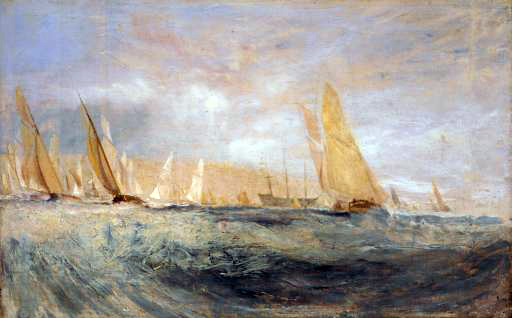
Joseph Mallord William Turner Sketch for `East Cowes Castle, the Regatta Beating to Windward’ No. 3  (1827). Oil on canvas.
Â
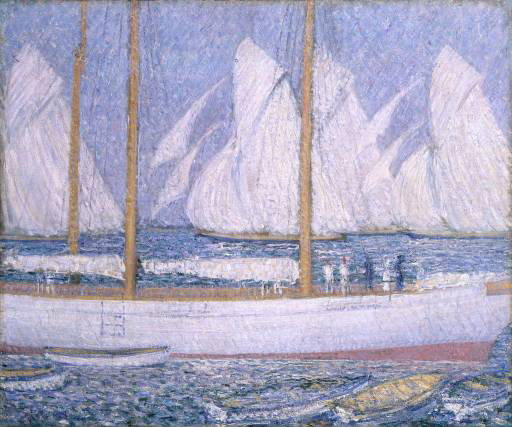
Philip Wilson Steer A Procession of Yachts (1892-3). Oil on canvas.
Â
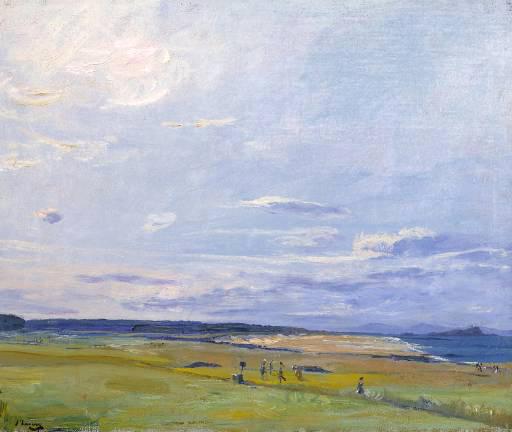
Sir John Lavery The Golf Course, North Berwick (1922). Oil on canvas.
Â
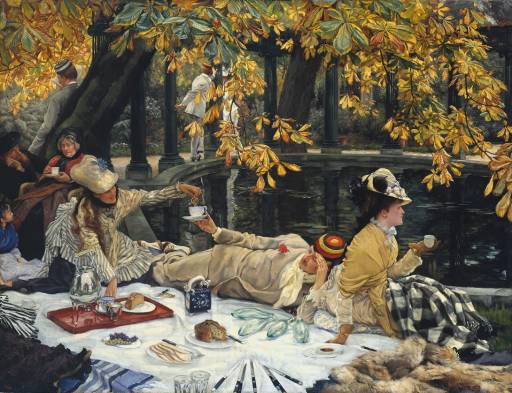
James Tissot Holyday (circa 1876). Oil on canvas.
Â
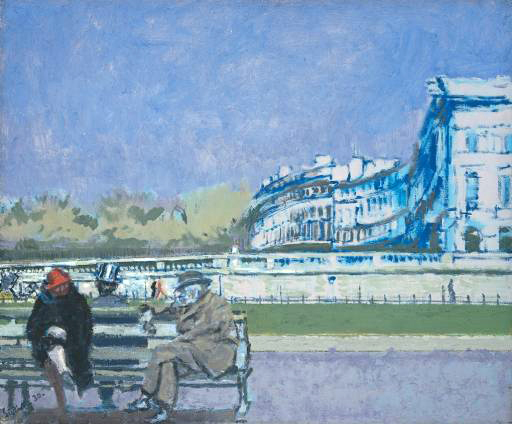
Walter Richard Sickert The Front at Hove (1930). Oil on canvas.
Â
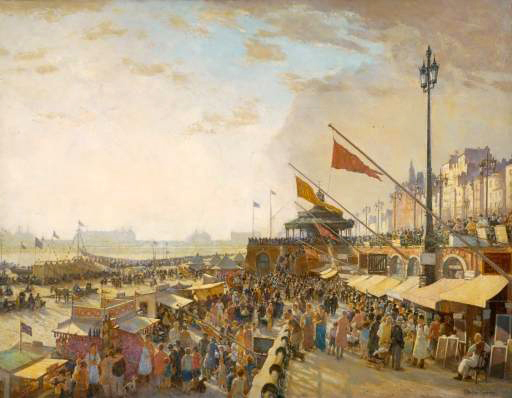
Charles Cundall Bank Holiday, Brighton (1933). Oil on canvas.
Â
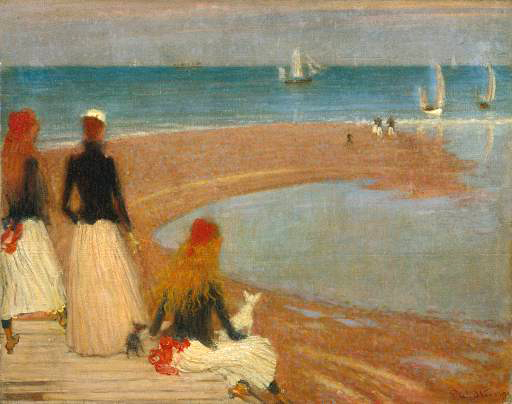
Philip Wilson Steer The Beach at Walberswick (circa 1889). Oil on wood.
Â
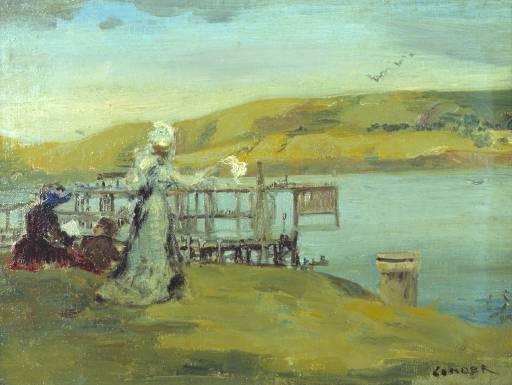
Charles Conder By the Sea: Swanage (circa 1901). Oil on canvas.
Â
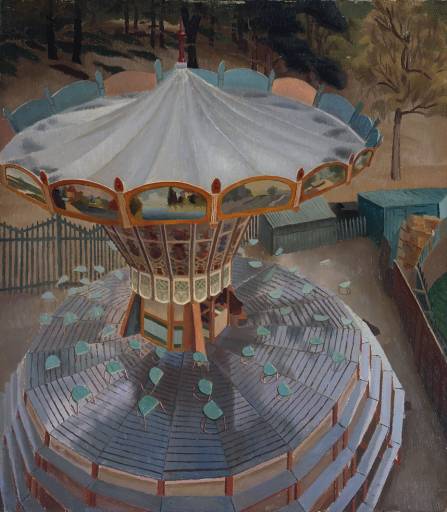
Sir Stanley Spencer The Roundabout (1923). Oil on canvas.
Â
Posted in ART & LEISURE, INSPIRATION, RESEARCH | Comments Off on THE ART OF LEISURE

























